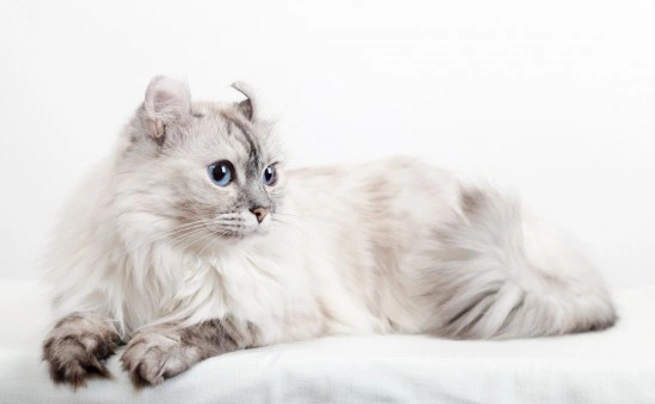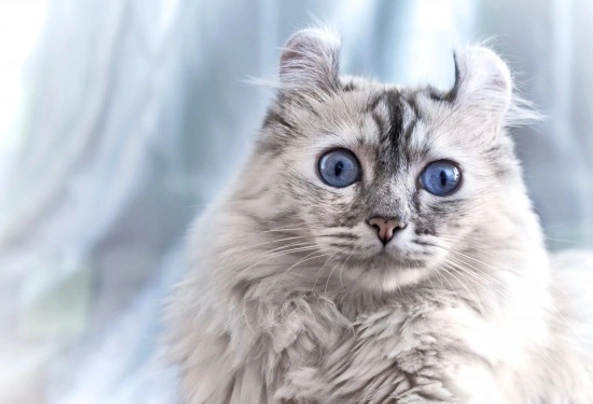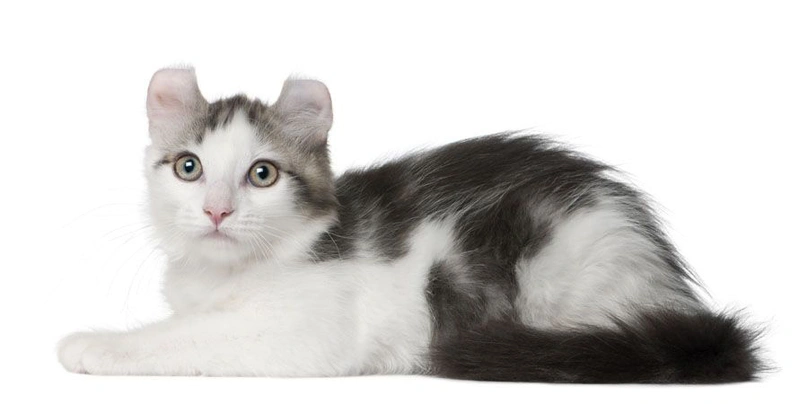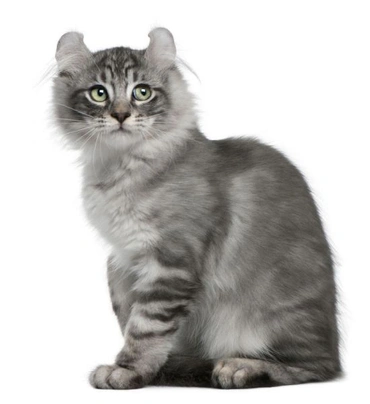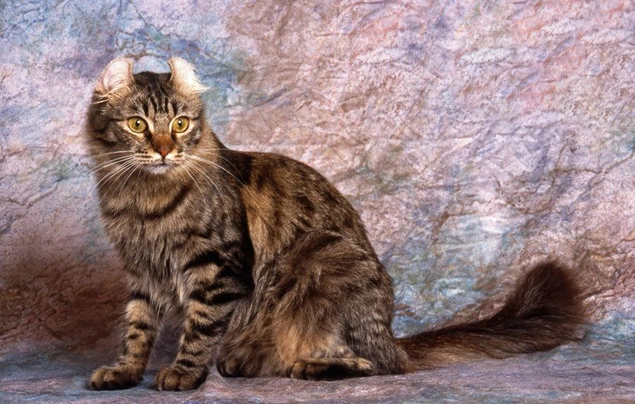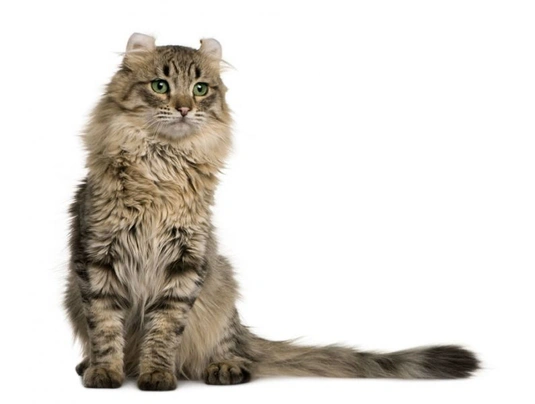American Curl
Introduction of the American Curl
The American Curl originates from the standard domestic household pet in North America with the exception of a striking mutation of ears that curl back from the top of the head pointing towards the back which gives the cat an expression of utter amazement.
Although fully recognised in the USA it is rarely seen in the UK as it is not recognised by the Governing Council of the Cat Fancy (GCCF) and therefore cannot be shown here at GCCF shows. However it is found in many other countries including Spain France Japan and Russia.
The Ameican Curl cat breed is recognised in the UK however by both TICA and FIFe so if you visit a cat show run by one of these organisations it would be possible to see one of these cats in the UK. At the time of writing there are currently only 2 breeders of American Curl cats in the UK so the chances of seeing one of these breeds is quite rare.
The extent of the curl determines whether or not a cat the cat be bred from or shown in the USA - cats with ears just turned back become pets those with slightly more curl can be used for breeding and those with full crescent curls can be shown. The original variety is a semi-longhaired cat but out-crossing has subsequently produced a shorthaired variety and as the shorthaired gene is dominant many shorthaired Curls carry the longhair gene and produce semi-longhaired kittens. The gene producing the Curl effect is a dominant one and breeding with any non-Curl cat as part of a programme to increase the gene pool will produce at 50% of kittens with the Curl appearance - both Curl and non-Curl kittens are useful to improving the programme for the future of the breed.
History of the American Curl
Like the rex cats with their unusual curled coats which can be traced back to one cat so the American Curl can be traced back to 1981 when a stray black female kitten with a long silky coat and rather unusual ears first appeared in the garden of a couple called Grace and Joe Ruga who lived in California. The couple fed the new arrival at first with bowls of food placed outside and then eventually the kitten decided to move in. Her new owners named her Shulamith meaning 'peaceful one' after the shepherdess in the Biblical Song of Songs. In due course Shulamith produced a litter of four kittens two of which had the same curly ears and the breed was soon recognised appearing at shows in California (where there is still a predominance of American Curl breeders) in 1983. It was fully recognised in the USA by the International Cat Association (TICA) in 1987 and with the Cat Fanciers Association (CFA) in 1993. All American Curl cats in the USA today are descended from Shulamith the original foundation cat of the breed. Although the breed first arrived in the UK in 1995 they are unlikely to be recognised by the GCCF because of the effect of the Curl gene on the ears which can become very sensitive and need to be handled with extreme care as uncurling them can damage the cartilage and it is feared that further health problems could emerge.
Appearance of the American Curl
Kittens of this unusual and distinctive breed are actually born with straight ears the tips starting to curl from between two to ten days curling and uncurling until they 'set' permanently at about four months old. The look of the ears has sometimes been compared to that of the lynx due to the elaborate tufting within the swept-back formation but there is no known connection to this type of wild cat. This breed is of medium size with adults weighing between 7 - 10 lb on average and the only difference between the semi-longhaired and shorthaired varieties is the coat length. All American Curls come in an amazingly wide range of patterns including self (one solid colour) tortie smoke pointed shaded tipped tabby and bi-colour. Within each coat pattern is a wide palette of recognised coat colours including black chocolate red blue lilac cream and white. The eyes are large and round and can be any colour though usually linked to the coat colour and pattern. The tail is full length usually equal to the length of the body and in the longhaired variety the tail will show a full plume.
Temperament of the American Curl
American Curls have a delightful temperament very people-orientated and love being with their humans. They are not noisily demanding like the Orientals but will chat quite happily in a relatively quiet voice. Although they love everyone and adore being handled this is not an ideal breed for a family with small children who might be tempted to try and uncurl the fragile ears which could cause permanent damage. They are very intelligent and inquisitive cats often getting involved with jobs around the house that really have nothing to do with them and they need to have company and toys to play with especially if the family is out during the day. This breed keeps its kitten-like playfulness well into adulthood and is sometimes described as the 'Peter Pan' of the cat world!
Intelligence / Trainability of the American Curl
Many American Curls live to the mid-teens and although the main area of concern with this breed is the delicate nature of their ears it is still early days to know whether there are any other breed-related problems though so far nothing else specific has emerged. In common with other cats they need annual vaccination boosters against the common feline ailments of flu and enteritis as well as against Feline Leukaemia if they go outdoors.
Children and other
The American Curl will eat most good quality proprietary brands of cat food but will also enjoy treats of cooked chicken ham and grated cheese. However cows' milk will probably give them a stomach upset and a bowl of water should always be available. Both the semi-longhaired and the shorthaired varieties of American Curl have silky close-lying coats which will need little grooming apart from a gentle combing from time to time to remove any loose hairs. However the ears do need frequent cleaning to prevent infection as they are more open to attracting dirt than many other breeds and care must be taken when doing this.
Health of the American Curl
Caring for the American Curl
Grooming of the American Curl
Exercise of the American Curl
Feeding of the American Curl
American Curl price

Only 2 left. Unique kittens for the best homes.
£750
American curl silver,tabby rare breed
£600
